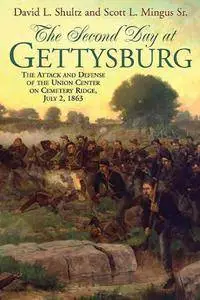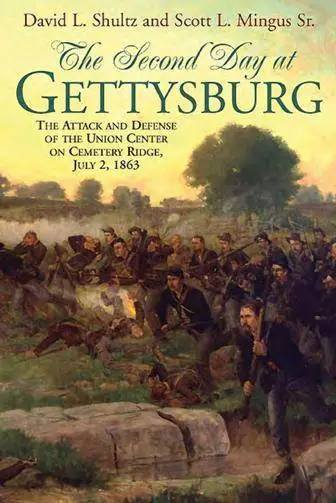The Second Day at Gettysburg:
The Attack and Defense of the Union Center on Cemetery Ridge, July 2, 1863
by David Shultz and Scott Mingus
English | 2015 | ISBN: 1611210747 | 548 Pages | PDF | 5.5 MB
The Attack and Defense of the Union Center on Cemetery Ridge, July 2, 1863
by David Shultz and Scott Mingus
English | 2015 | ISBN: 1611210747 | 548 Pages | PDF | 5.5 MB
On the afternoon of July 2, 1863, Lt. Gen. James Longstreet struck the Union left flank with a massive blow that collapsed Dan Sickles' advanced position in the Peach Orchard and rolled northward, tearing open a large gap in the center of the Federal line on Cemetery Ridge. Fresh Confederates from A. P. Hill's Corps advanced toward the mile-wide breach, where Southern success would split the Army of the Potomac in two. The fate of the Battle of Gettysburg hung in the balance. Despite the importance of the position, surprisingly few Union troops were available to defend Cemetery Ridge. Major General Winfield S. Hancock's veteran Second Corps had been whittled from three divisions to less than one after Gibbon's division was sucked into earlier fighting and Caldwell's command was shattered in the Wheatfield. With little time and few men, Hancock determined to plug the yawning gap. Reprising Horatio at the Bridge, the gallant commander cobbled together various commands and refused to yield the precious acres in Plum Run ravine. The swirling seesaw fighting lasted for hours and included hand-to-hand combat and personal heroics of which legends are made. The Second Day at Gettysburg: The Attack and Defense of the Union Center on Cemetery Ridge, July 2, 1863 expands on David Shultz and David Wieck's critically acclaimed earlier work The Battle Between the Farm Lanes. This completely revised and expanded study, which includes new photographs, original maps, and a self-guided tour of the fighting, is grounded in extensive research and unmatched personal knowledge of the terrain. The result is a balanced and compelling account of this often overlooked portion of the battle.



